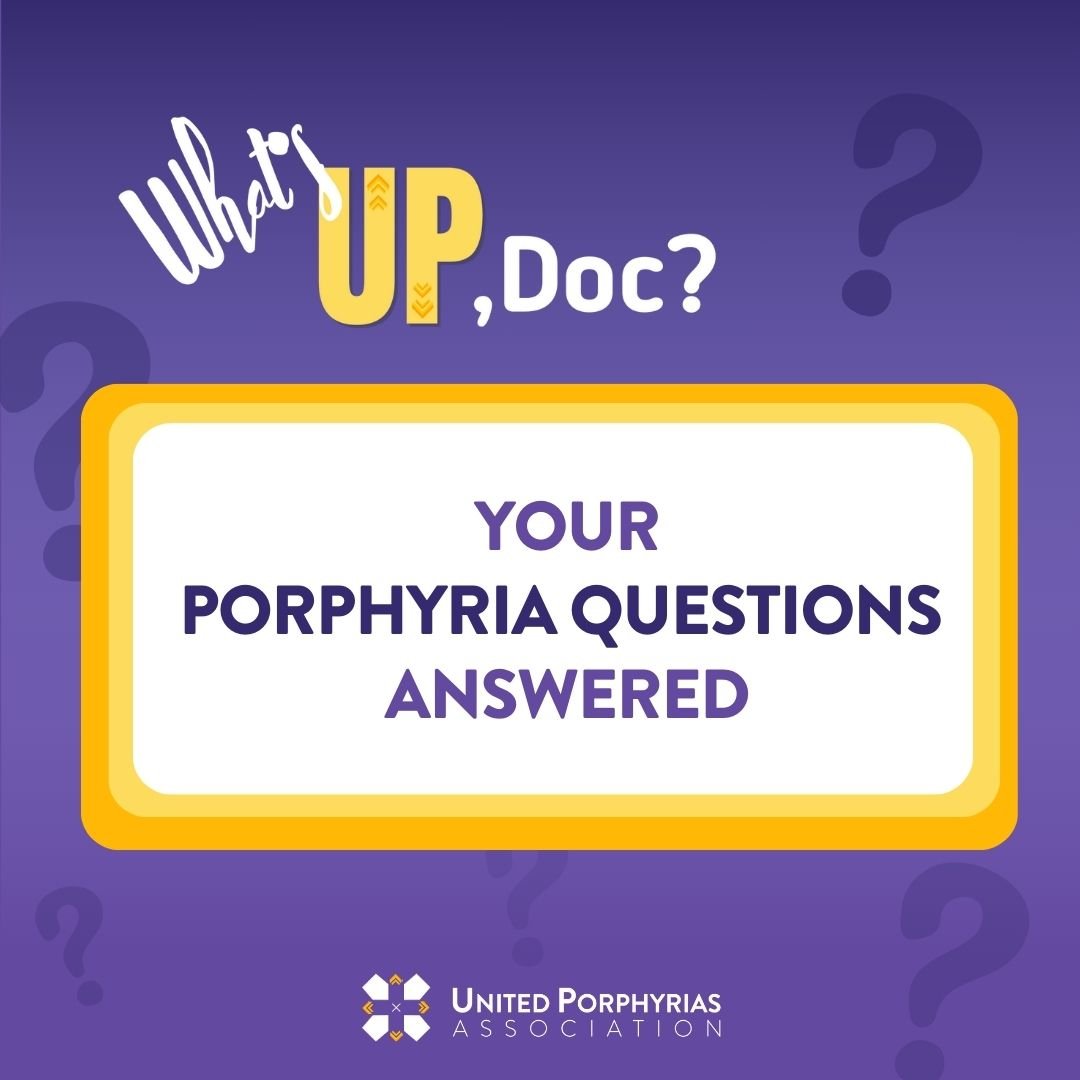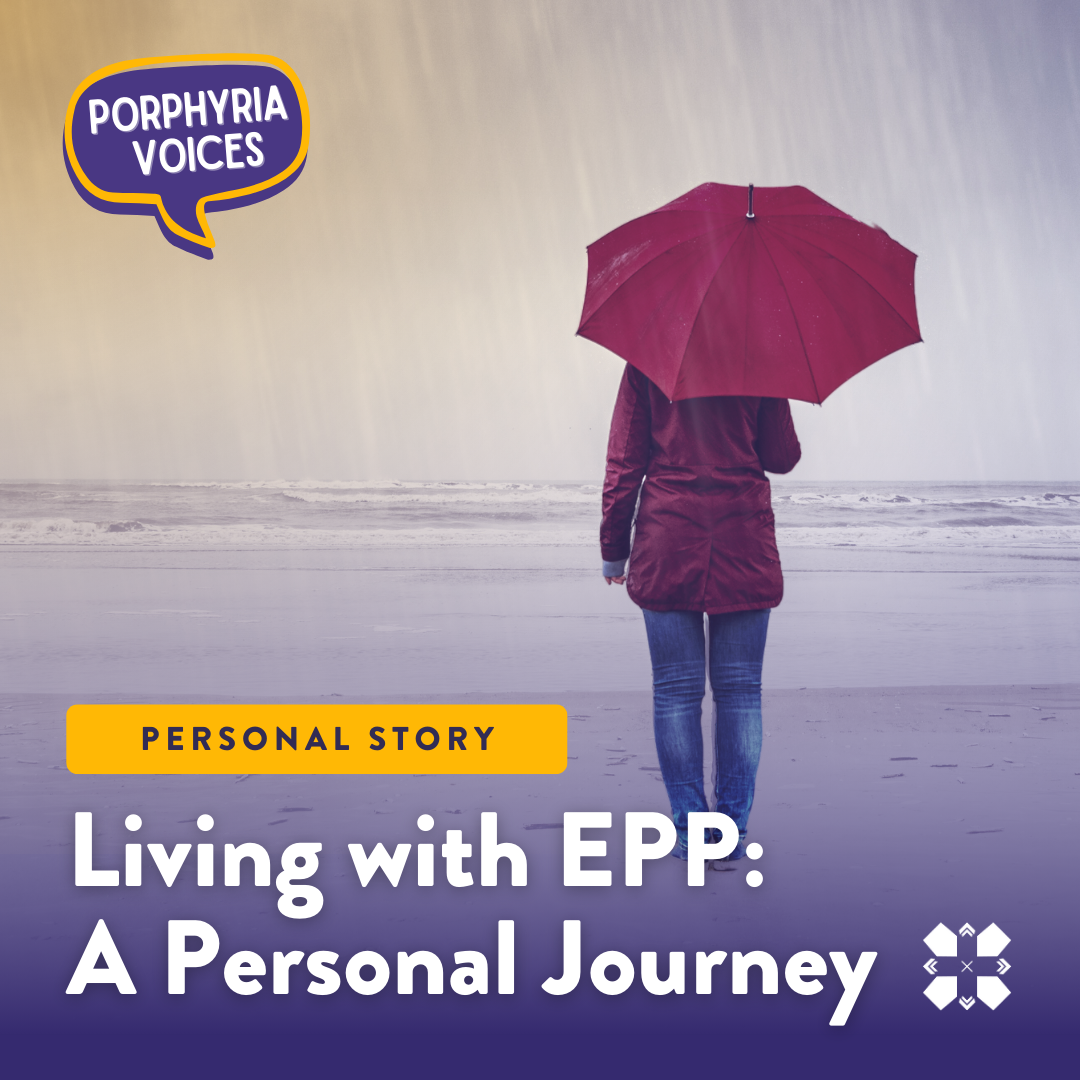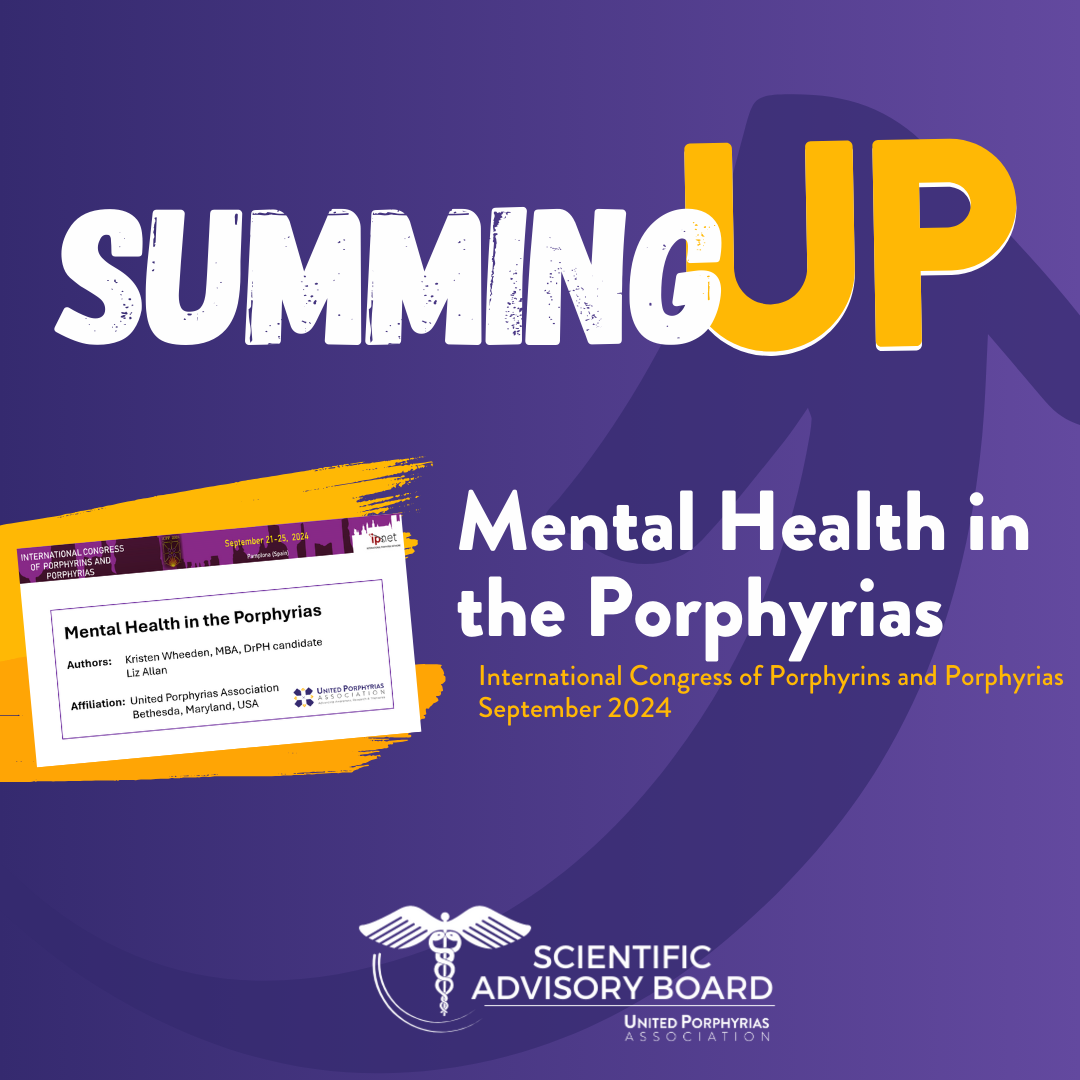
EPP & XLP
Erythropoietic Protoporphyria & X-Linked Protoporphyria
Erythropoietic Protoporphyria (EPP) & X-Linked Protoporphyria (XLP)
Erythropoietic Protoporphyria (EPP) & X-Linked Protoporphyria (XLP), collectively know as the protoporphyrias, are characterized by severe pain in the skin with exposure to sunlight and some forms of artificial light.
People with protoporphyria first experience tingling, itching, or burning which is like a warning sign to avoid further sun exposure. With ongoing exposure, the symptoms progress to severe pain that may be followed by swelling or redness. The most common areas affected include the back of the hands and the face.
The amount of sunlight tolerance varies between people with some able to tolerate only a few minutes and others who can stay out in the sun for much longer.
Symptoms typically appear in childhood. EPP is equally common in males and females.
In both EPP and XLP, a molecule called protoporphyrin (PPIX) accumulates in the bone marrow, where blood cells are made. The protoporphyrin is then transported throughout the body in the blood plasma and red blood cells. When it passes through the blood vessels in your skin, it reacts to sunlight and initiates a painful reaction that can last for several days. Protoporphyrin can also be deposited and build up in the liver and bile, which can lead to liver damage.
In EPP, the build up of protoporphyrin is caused by decreased activity of the enzyme FECH, which results from changes in the FECH gene.
In XLP the build up is caused by changes in the ALAS2 gene. Although it is a different gene and enzyme, the result is also a buildup of protoporphyrin and the symptoms are the same as in EPP.
Symptoms are triggered when skin is exposed to sunlight and some types of artificial light. Light can be reflected off snow or water, or be coming through a window.
People can first experience tingling, itching, or burning which is like a warning sign (prodrome) to avoid further sun exposure. With ongoing exposure, the symptoms generally progress to severe pain that may be followed by swelling or redness. The most common areas affected include the back of the hands and the face.
Reactions can include:
Severe pain and burning when skin is exposed to light
Swelling and sometimes reddening of the skin in affected areas
Increased sensitivity to things such as wind, temperature and light after a reaction
Babies and young children may be irritable, cry or scream when outside or in bright light, and irritability continues once they’re brought inside
Over time, skin on knuckles and face can thicken and scar. Patients may develop thickened skin on palms and soles of feet. Rarely, skin lesions and discoloration can occur.
EPP/XLP can also cause complications related to liver and gallbladder.
EPP and XLP are diagnosed by an elevated erythrocyte total protoporphyrin that is predominantly “metal-free” rather than “zinc.” Plasma porphyrins are also increased in most but not all cases. Urine porphyrins will be normal.
NOTE: Some major laboratories do not offer the proper testing for EPP and XLP. At present, only the UTMB Porphyria Lab and Mayo Medical Laboratories are recommended.
Preventing reactions to light
Scenesse is an FDA-approved treatment for ages 18+ with EPP and XLP. Scenesse works by increasing pigmentation (darkening) of the skin and also has anti-oxidant properties. This drug comes in the form of an implant which is inserted in the fat just below the skin of the belly and given every two months. The implant dissolves by itself and does not need to be removed. Studies have shown that patients on Scenesse were able to tolerate more sunlight without pain and that it was safe to use long term.
Two additional potential treatments (MT-7117 and bitopertin) are currently being tested for EPP/XLP for individuals aged 12+. These drugs are both oral medications. More information on participating in clinical trials for these treatments is available here.
Treatment with pharmaceutical grade β-carotene (Lumitene, Tishcon) and cysteine have been used in the past but there is no good evidence that these are effective.
Managing pain from reactions
Some patients find cold compresses and cooling devices provide minor relief. Anti-itch treatments like cortisone or antihistamines do not help the symptoms of EPP/XLP.
People with EPP/XLP should see a porphyria specialist at least once a year for regular follow-up. People who have liver function abnormalities may need to see a specialist more regularly.
Light Avoidance
The main management for EPP/XLP is to avoid sunlight. Using opaque or sun-protective clothing and tinting car windows can minimize exposure. Using opaque (zinc oxide or titanium dioxide) sunscreens might help a little bit, though the evidence for this is not good. Other sunscreens are not effective because they do not block the range of light that causes a reaction (blue light, around 405nm).
Vitamin D
Vitamin D levels can be low in people with EPP/XLP, so these should be checked annually and supplemented if needed.
Iron
Iron levels can be low in people with EPP/XLP and should be checked annually. Guidance for iron supplementation varies depending on your type of protoporphyria:
EPP: iron supplementation may make light sensitivity worse. Oral supplementation is recommended only if significant anemia and related symptoms are present.
XLP: iron supplementation may reduce light sensitivity and improve symptoms.
Surgery
Strong operating room lights can cause damage to the skin and even to internal organs. Doctors can order filters to cover the operating room lights. This is especially important in EPP patients with liver failure if they are having a liver transplant. For short surgeries and endoscopies, light filters are not needed.
There are no anesthetic or other medications used during surgery that are contraindicated (unsafe) for EPP and XLP.
Light and Laser Therapy
Lights that are outside of the 340-650nm light range are considered safe, but a spot test is recommended before beginning treatment.
A small number of EPP and XLP patients develop liver disease and liver failure. It is not possible to predict who will develop liver failure and it can appear suddenly and progress quickly in some patients.
Liver tests should be done at least annually to monitor liver function.
To avoid preventable injuries to the liver, Hepatitis A and B vaccinations are recommended, as is the avoidance of excessive alcohol use and other potential liver toxins.
Growing up with EPP or XLP can be difficult for kids and their families. Here are some resources specifically for you:
Shadow Jumpers
Our sister organization, Shadow Jumpers, focuses specifically on kids and families with photosensitive conditions like EPP and XLP. Some of the great resources they offer include:
UV Clothing Drives: receive new-to-you sun protective clothing for your child and help other families with items your child has outgrown
Family Assistance: go on a trip of a lifetime, add life-changing modifications to your home or vehicle, get much-needed financial support, and more. Applications are accepted on an ongoing basis.
Sun Escape Weekend
Every May, join sun-sensitive families from across North America for a weekend of ALL FUN and NO SUN.
All costs, including reasonable travel expenses, are covered for the whole family. Applications are usually in Fall for following year.
Learn more at the Sun Escape website.
Shadow Jumpers Comic Book
Shadow Jumpers move from shadow to shadow to find the next safe place. This story follows Jackson and his friends, who have EPP. When an evil villain, UV man, threatens the world, Jackson and the other Shadow Jumpers spring into action. Will the knowledge and power they've gained from their experiences with EPP be enough to save the day?
This comic book was developed as a resource for children (of all ages!) based on an evidence-based publication on psychosocial issues on EPP/XLP. Check out the research here!
Sun Escape Mamas and Dads Facebook Group
Connect with fellow parents in this private Facebook group just for you!
EPP
EPP is an autosomal recessive condition. Autosomal means that the defect is not on the chromosomes that determine sex, and recessive which means that patients who have EPP have inherited two changed copies of the FECH gene, one from each parent. All children of an EPP patient will inherit one of the changed copies of the FECH gene.
Typically, people with EPP inherit one rare and strong defect from one parent and one common and mild defect from the other. Two copies of the common and mild defect are not enough to get EPP.
XLP
XLP is an X-linked inherited genetic disorder. This means that the defect is on the X chromosome. Females have two copies of the X chromosome, while males have only one copy. Because females have two copies of the X chromosome, females with XLP have one changed copy of ALAS2 and one normal copy. A random process in the body causes one X chromosome to be turned off. For this reason, females can present with a varying degree of symptoms ranging from no symptoms to severe XLP symptoms. There is no way to predict this ahead of time. Therefore it is important for family members of people with XLP to be tested for this change so that they can receive appropriate counseling.
Genes are inherited randomly, so each parent has an equal chance of passing on either one of their sex chromosomes. If the father has XLP, each of his children has a 50% chance of inheriting his X chromosome (which has the changed gene) and a 50% chance of inheriting his Y chromosome (which does not have the gene). If they have inherited the X chromosome, they will be female and have one changed copy of ALAS2. If they have inherited the Y chromosome, they will be male and not have XLP.
If a father has XLP, all of his daughters will have XLP but none of his sons will be affected. If a mother has XLP, approximately 50% of her children will have XLP, either sons or daughters.
More EPP/XLP Resources
Check out our Spotlight Porphyria blog for answers to common (and uncommon) AIP questions, updates on the latest research and more!

Get Connected
-

Get your questions answered
Our Patient Navigator can help you find porphyria specialist, access testing and treatments, and get your porphyria questions answered.
-

Find others who know what it's like
Connect regularly with small group of your peers! Groups are created around diagnosis and particular experiences/needs.
-

Talk one-on-one
Connect with a UPA Ambassador who understands what you're going through, because they've been there too.










